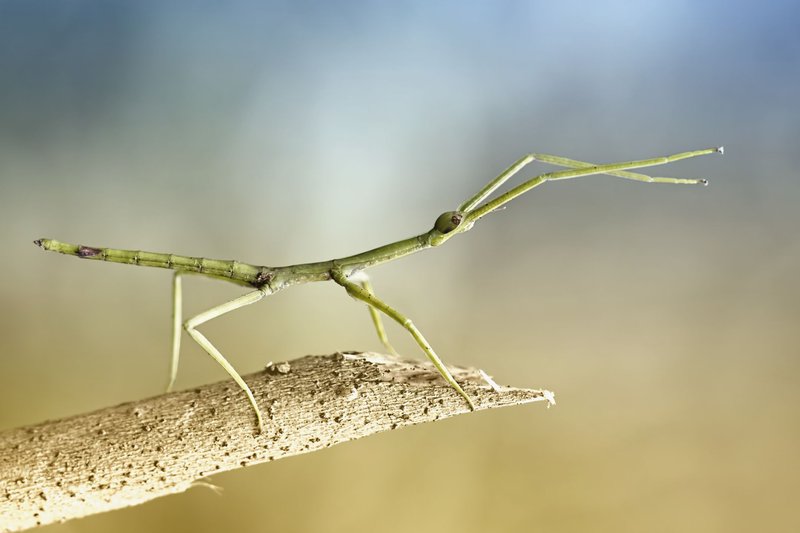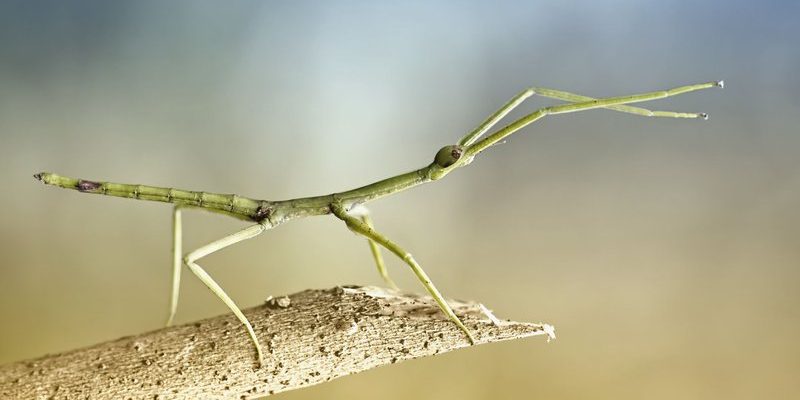
Honestly, these insects are not just good at hiding. They have a variety of unique traits and behaviors that make them stand out in the insect kingdom. Think of them like the chameleons of the bug world, but instead of changing colors, they rely on their twig-like appearance to avoid predators. With that in mind, let’s explore ten amazing facts that might just change the way you see these impressive little guys.
1. Masters of Camouflage
Stick insects are *champions of disguise*. Their ability to mimic the appearance of twigs or leaves is nothing short of remarkable. This camouflage helps them avoid predators like birds and lizards. Some species can even change their color slightly to match their environment better, though it’s not as dramatic as a chameleon. Imagine walking through a forest and not even noticing a stick insect resting quietly, perfectly blending into the branches around it.
This impressive adaptation is a survival mechanism that has evolved over millions of years. By staying hidden, stick insects can go about their daily lives without the constant threat of becoming someone else’s lunch. It’s like they’ve mastered the art of being invisible—at least to those who might want to eat them!
2. Incredible Variety
You might be surprised to learn that there are over 3,000 species of stick insects worldwide. That’s a lot of diversity! They come in different shapes and sizes, with some measuring just a couple of inches and others stretching up to a foot long. The diversity doesn’t stop there; their colors can range from greens and browns to some more vibrant hues.
This variety is important because it allows them to inhabit many different environments, from tropical rainforests to arid deserts. Each species has adapted to its specific habitat, making them incredibly versatile. Imagine how different your life would be if you could change your appearance to fit in perfectly with your surroundings—stick insects do just that, and it’s fascinating!
3. Unique Reproductive Strategies
Stick insects have a couple of interesting reproductive methods. One of the most unusual is called parthenogenesis, where females can reproduce without mating. This means they can lay eggs that develop into new stick insects without the need for a male. It’s like having a backup plan, ensuring that the species continues even if males are scarce.
In some cases, when conditions are right, mating occurs, and males and females will engage in a courtship dance before mating. During this dance, the female often shows off her impressive camouflage skills, moving gracefully through branches and leaves. It’s a beautiful ritual that highlights the fascinating behaviors of these insects.
4. Slow Movers with a Purpose
While you might expect stick insects to be quick and agile, they are actually quite slow movers. This isn’t a disadvantage, though. Their slow movements help them avoid detection. Think of them as little ninjas, stealthily blending into their surroundings, making calculated movements to avoid leaving any trace of their presence.
Their sluggishness also plays a role in their feeding habits. Stick insects primarily eat leaves, and they often need to conserve energy. By moving slowly and carefully, they reduce the chances of being spotted by hungry predators. This strategic approach to life is a perfect example of how evolution has equipped them for survival in the wild.
5. Fascinating Feeding Habits
Speaking of eating, stick insects have a diet primarily consisting of leaves. They’re herbivores, munching on a variety of foliage, including eucalyptus and bramble. Interestingly, they have a very specific selection of plants they prefer to feast on, which can vary by species.
These insects have a unique way of nourishing themselves, taking their time to chew on leaves thoroughly. Their eating habits serve a purpose beyond just survival; they also help maintain the ecosystem by promoting plant growth. As they digest leaves, they contribute to the nutrient cycle in their habitats, showcasing just how interconnected life truly is.
6. They Can Be Quite Social
While you might picture stick insects as solitary creatures, some species are quite social. They sometimes gather in groups, especially when it’s time to breed. Being around others can provide safety in numbers, which is a smart strategy for avoiding predators.
Additionally, when stick insects are in groups, they can help regulate their own environment. By clustering together, they can create a microclimate that retains moisture, which is essential for their survival. It’s a great example of how even small creatures can exhibit complex social behaviors that benefit the whole group.
7. Lifespan and Growth
Stick insects typically have a lifespan of about 1 to 3 years, depending on the species and environmental conditions. Their life cycle consists of several molts, where they shed their exoskeleton to grow. As they mature, they can sometimes look quite different from their younger selves.
During these molts, stick insects can also change in coloration and size, adapting better to their surroundings as they grow. This transformation can be quite striking, and it shows how resilient and adaptable these insects are. If you’ve ever seen a stick insect in various stages of growth, it’s like watching a tiny miracle unfold right before your eyes!
8. A Unique Defense Mechanism
When they feel threatened, stick insects have a few tricks up their sleeves. Besides their excellent camouflage, many species can release a foul-smelling liquid to deter predators. This liquid doesn’t just smell bad; it can also taste unpleasant, giving potential attackers a reason to think twice before taking a bite.
Additionally, some stick insects can drop limbs to escape danger. While it might sound drastic, they can regenerate these lost limbs over time. It’s almost like a superhero power, allowing them to live to see another day. This makes stick insects not just masters of disguise but also clever defenders of their own lives.
9. Popular Pets with Specific Needs
Stick insects have grown in popularity as pets due to their unique appearance and fascinating behaviors. However, they have specific care requirements that pet owners need to consider. They thrive in environments that mimic their natural habitats, meaning humidity and temperature control are essential.
Feed them fresh leaves daily, and ensure their enclosures are spacious enough for them to move comfortably. If you’re thinking about getting one as a pet, it’s crucial to research the specific needs of the species you choose. Caring for a stick insect can be a rewarding experience if you’re up for the challenge!
10. Conservation Status
While many species of stick insects thrive in the wild, some are becoming endangered due to habitat loss and environmental changes. Deforestation and urban expansion can disrupt their natural habitats, putting pressure on their populations. It’s essential to advocate for conservation efforts to protect these unique insects and their ecosystems.
Getting involved in local conservation initiatives or supporting organizations that focus on insect and habitat protection can make a big difference. After all, preserving the beauty of our natural world benefits not just stick insects but all living beings on Earth.
In conclusion, stick insects are truly remarkable creatures that showcase the wonders of nature. From their impressive camouflage to their fascinating reproductive strategies, there’s so much to admire about these insects. By understanding and appreciating them, we can help protect their habitats and ensure they continue to thrive. Who knew that such a simple little critter could teach us so much about survival, adaptability, and the interconnectedness of life?

